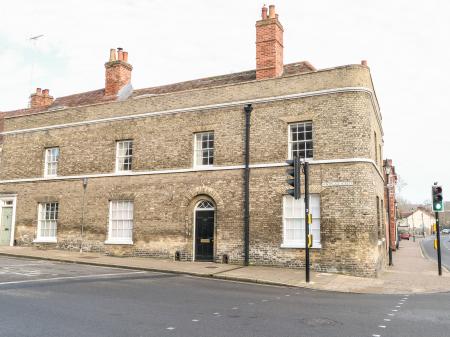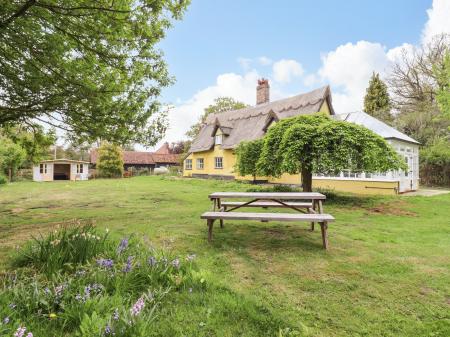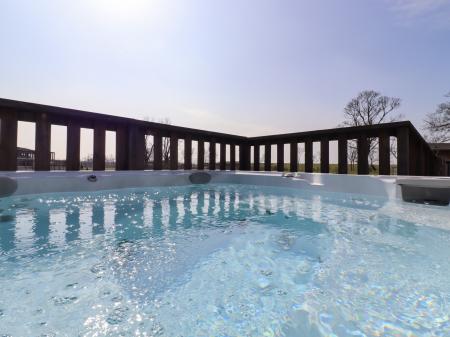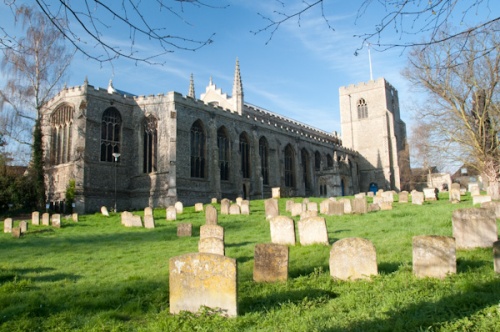
The oldest section of the church is the flint tower, which was built between 1395 and 1403. Almost the entire structure was rebuilt between 1424 and 1446, probably by William Layer.
The north chapel was added shortly after Layers death in 1444, and a Lady Chapel around 1463, but overall St Mary's presents a very unified Perpendicular Gothic appearance. The most impressive aspect is the west front, with a huge five-light west window flanked by four-light aisle windows on either side.
Equally impressive is the Notyngham Porch, on the north side. This was built around 1440 by a successful local grocer named John Notyngham, and is a superb example of mid-15th-century architecture.
The nave is of ten bays, creating a lofty, spacious interior capped by a superbly carved angel roof. The roof is one of the finest in East Anglia, an area rich in beautifully carved roofs. The roof is supported by 42 carved figures, and pairs of carved angels decorate the hammer beams.
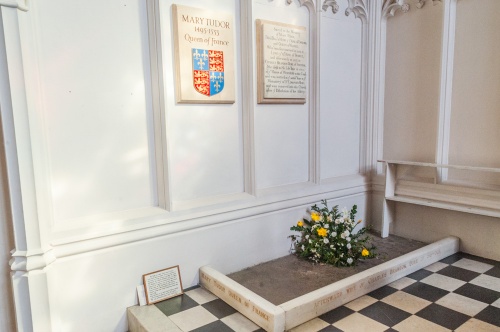
The aisle roofs are no less impressive - and a lot easier to see without binoculars! The carved spandrels depict a fascinating variety of subjects, including a mermaid, a fox and goose, and a woodwose, a local wild-man figure.
The chancel has a beautifully painted roof with carved bosses. The choir stalls are largely Victorian, but they incorporate some finely carved medieval bench ends. To the north side of the altar is the very simple tomb of Mary Tudor, Duchess of Suffolk and sister of Henry VIII.
Nearby, the aisles contain some fascinating memorials, including the tomb of John Baret, a wealthy cloth merchant whose effigy shows him as a gaunt cadaver. Close to the altar is the Tudor memorial of Sir William and Lady Carewe, and the tomb of Sir Robert Drury (d. 1536). In the Lady Chapel is a brass to Jankyn Smith (d. 1481) who is thought to have paid for the chapel.
St Mary's is one of the finest late medieval churches in East Anglia and is well worth a visit.
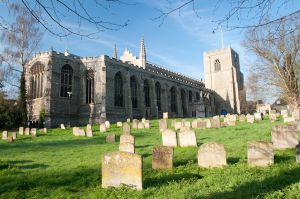
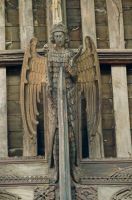
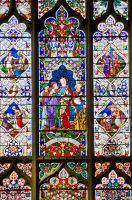
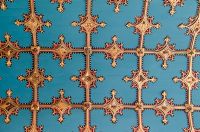
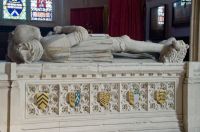
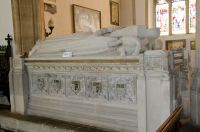
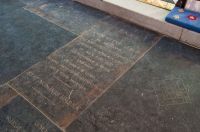
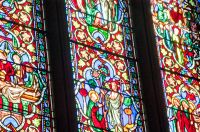
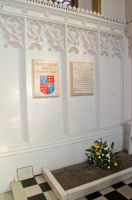
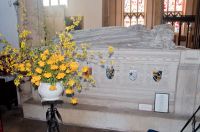
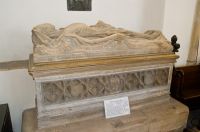
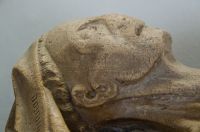
 We've 'tagged' this attraction information to help you find related historic attractions and learn more about major time periods mentioned.
We've 'tagged' this attraction information to help you find related historic attractions and learn more about major time periods mentioned.